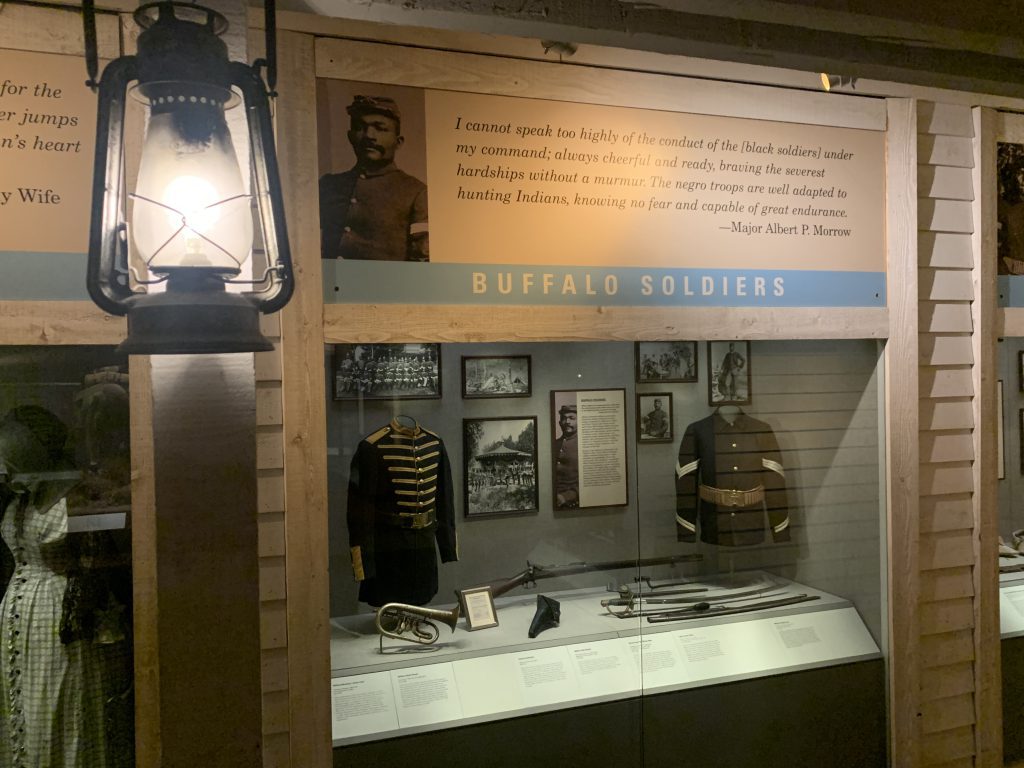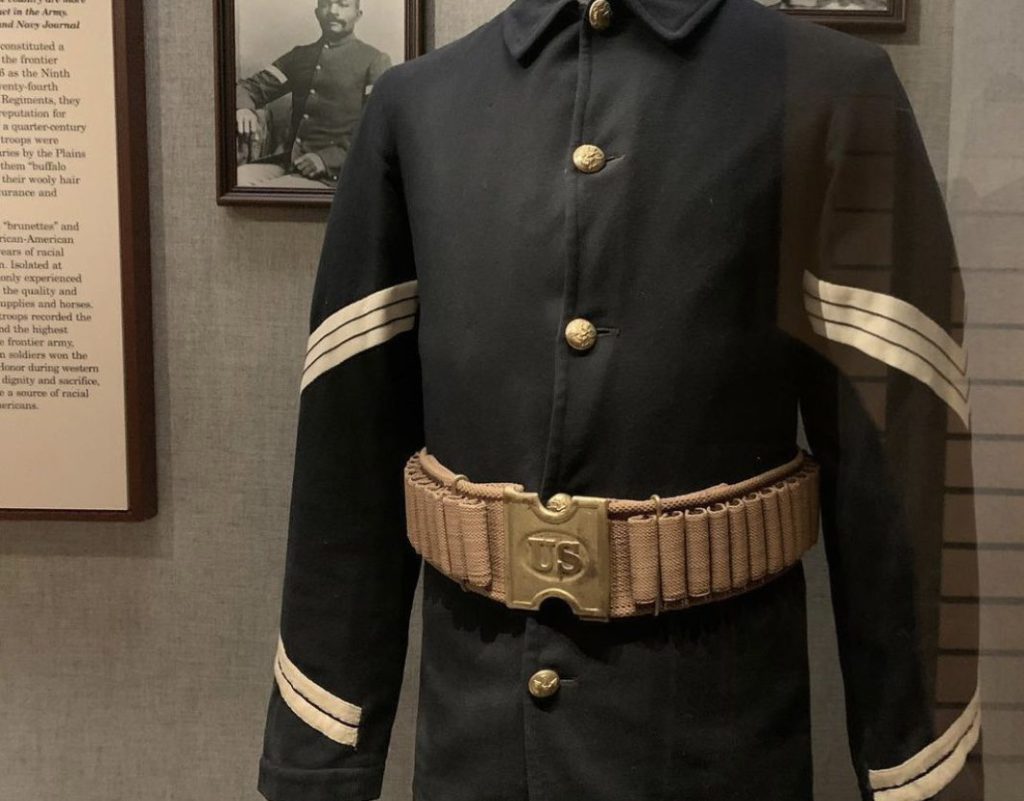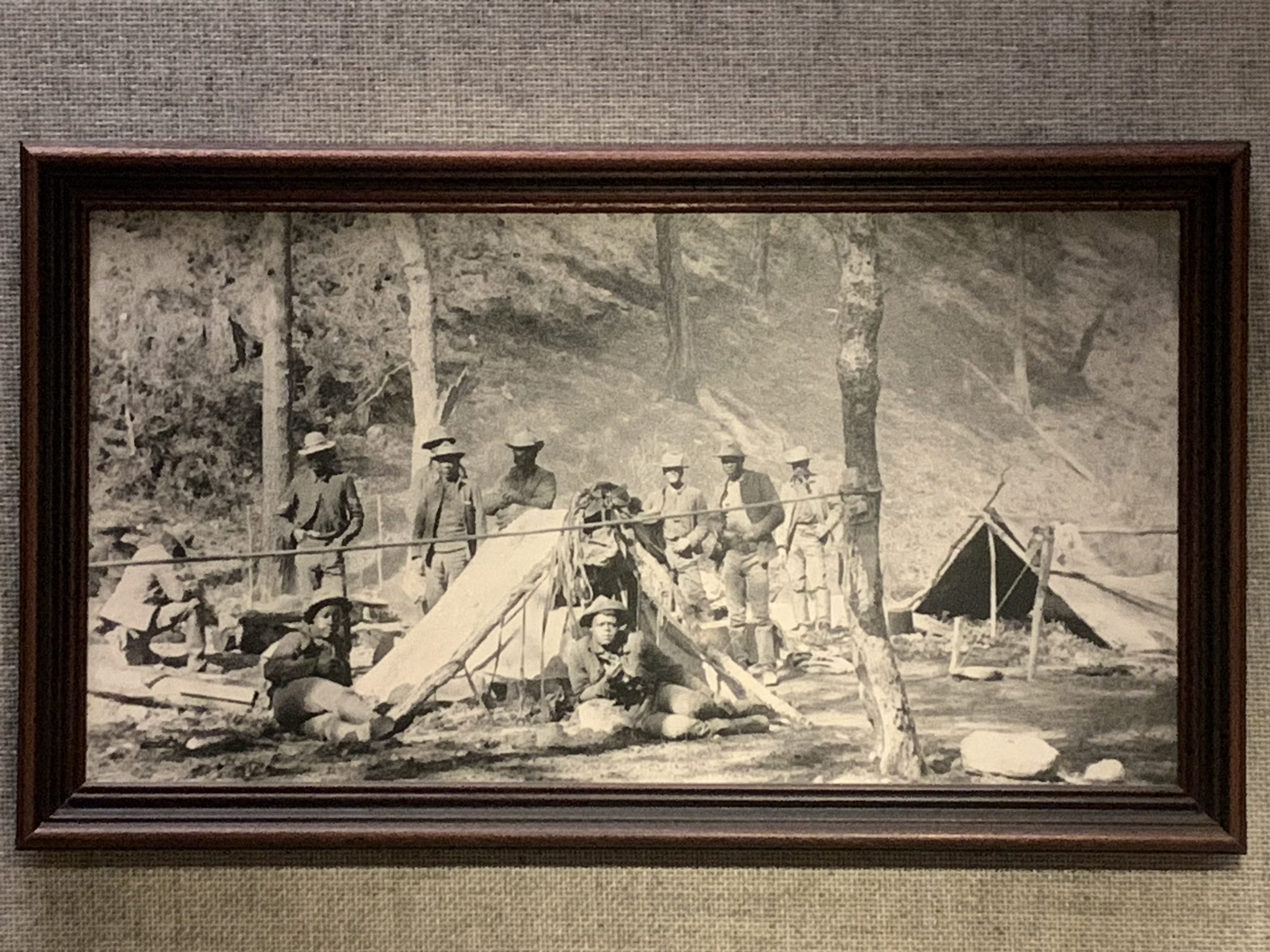In 1866 Senator Henry Wilson, (R-Massachusetts) and Senator Benjamin F. Wade (R- Ohio) pushed for an African American contingent in the regular US Army. This became a reality on July 28, 1866. Six regiments – two cavalry, four infantry—became the 9th and 10th Cavalry and the 24th and 25th Infantry by 1869. All officers were white.
During the late 1860s these regiments were primarily stationed at forts Leavenworth, Riley, Hays, Dodge, and Larned, Kansas, and in Indian Territory (now Oklahoma), and in Texas. Two companies were placed at Fort Brown, Texas, while the remainder went to Fort Stockton (which became 9th Cav HQ) and Fort Davis, Texas. The enlisted men in these regiments became known as “Buffalo Soldiers,” so named by Native Americans for their fierceness in battle. By the early 1870s, Buffalo Soldiers were stationed at Fort Sill, Indian Territory, and Fort Griffin, and Fort Concho, in Texas.

In 1875, the “Cantonment on the Sweetwater,” in today’s Wheeler County, Texas, was renamed Fort Elliott. By 1879, companies of the 9th and 10th U.S. Cavalry and the 24th U.S. Infantry garrisoned at Fort Elliott. From November 1881 to February 1884 all Fort Elliott’s enlisted men were African American.
In 1877 Henry O. Flipper, the first Black graduate of West Point, began serving as an officer in the 10th Cavalry, at forts Elliott, Concho, Quitman, and Davis, Texas, and at Fort Sill, Indian Territory. In the early 1880s, 9th Cavalry “Buffalo Soldiers” and Indian scouts from Fort Reno, Oklahoma Territory, arrested those who illegally entered the Territory (called “boomers.”)

























